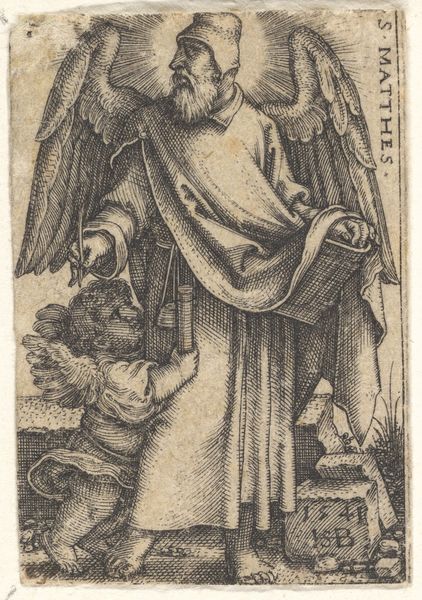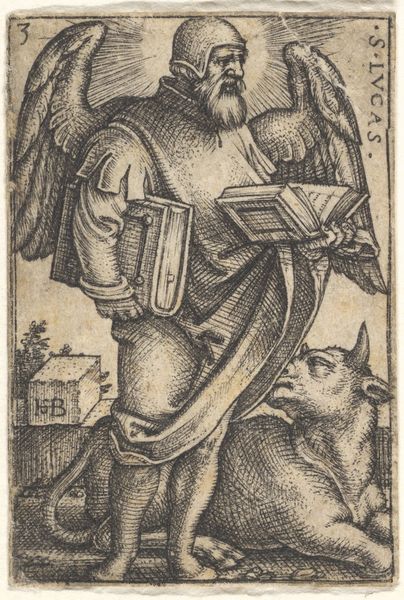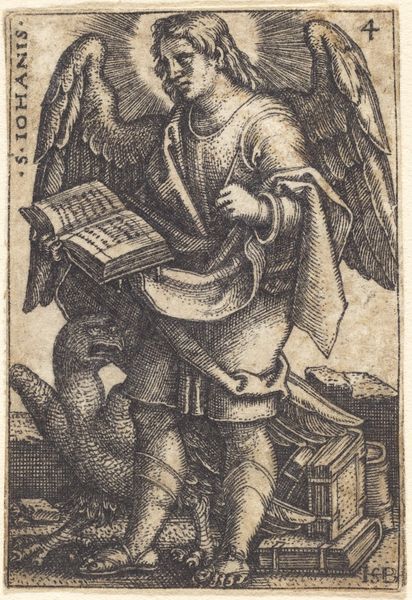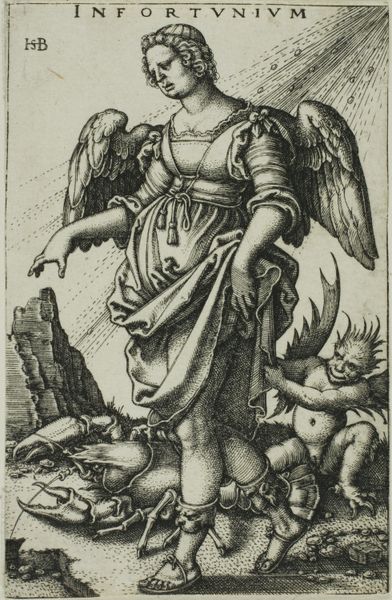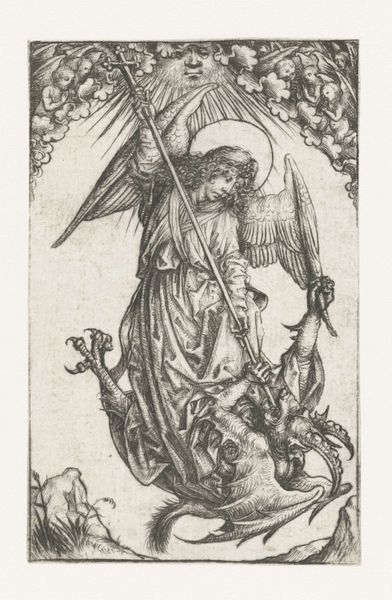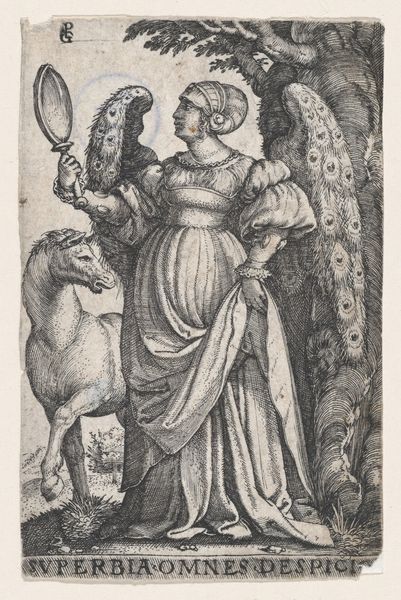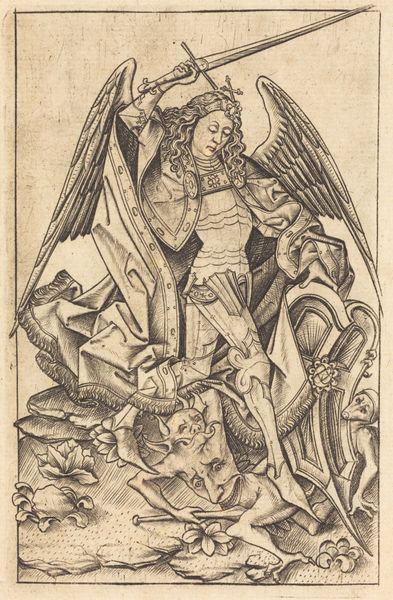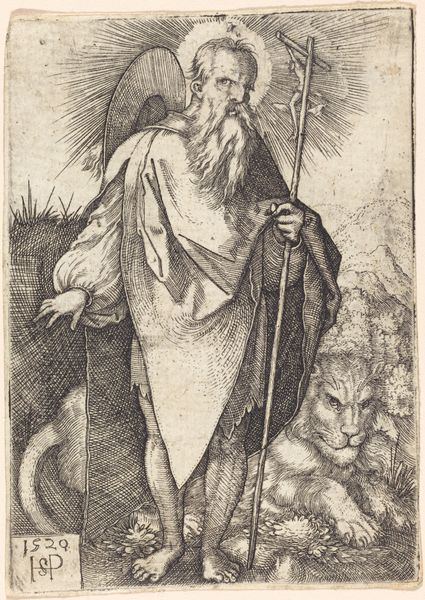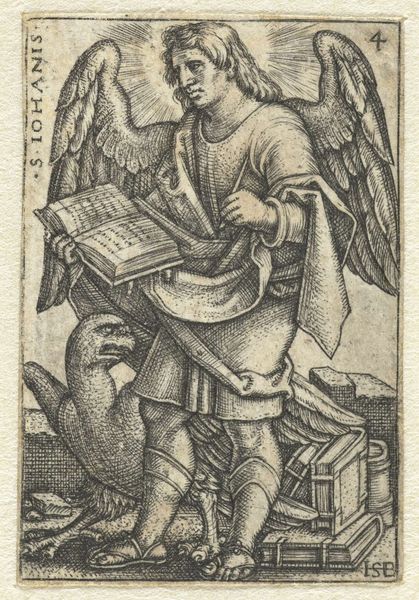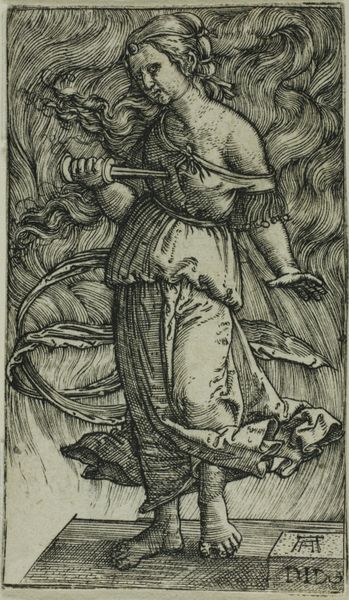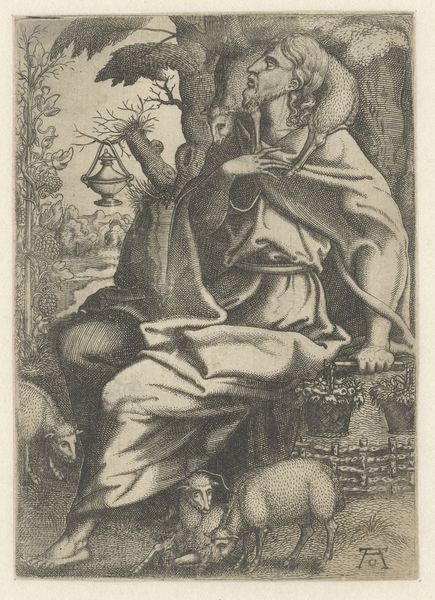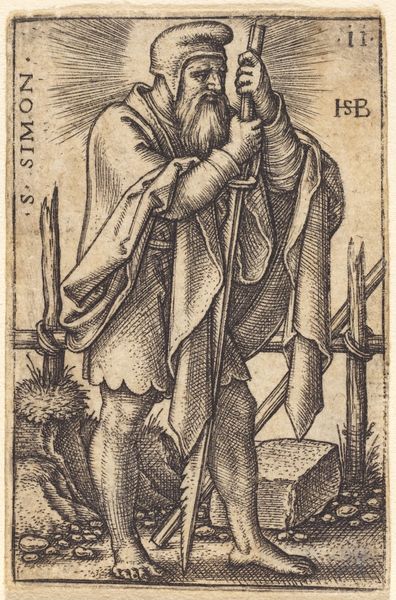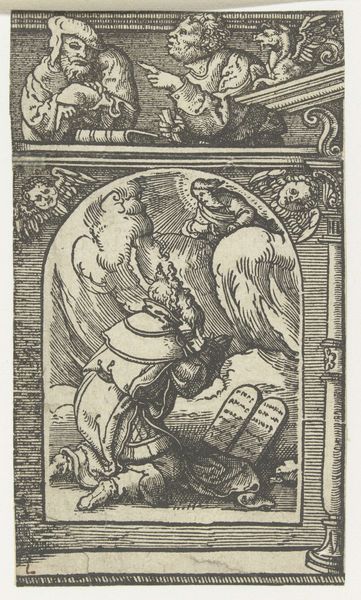
Plate 2: Saint Mark, his head turned in profile to the left, with an open book in his right hand and a lion at his feet, from 'The four evangelists' 1541
0:00
0:00
drawing, print, ink, engraving
#
portrait
#
drawing
#
pen drawing
# print
#
book
#
figuration
#
ink
#
line
#
history-painting
#
northern-renaissance
#
engraving
#
profile
Dimensions: Sheet: 1 5/8 x 1 3/16 in. (4.2 x 3 cm)
Copyright: Public Domain
Curator: Looking at this small print, I am struck by its intensity; it has such an interesting textural quality. It is as though a hidden story is wanting to escape, wouldn't you say? Editor: Indeed! That hatching creates almost palpable tension, especially with the halo around St. Mark. This engraving, "Plate 2: Saint Mark, his head turned in profile to the left, with an open book in his right hand and a lion at his feet, from 'The four evangelists,'" made in 1541 by Sebald Beham, provides such insight into the visual culture of the Northern Renaissance. Curator: It's fascinating to consider this piece as a kind of historical artifact. He isn’t how I would expect a saint to look. There is almost a casual feeling despite the symbolic weight of the book and, of course, the lion. Editor: Absolutely. Beham's Protestant leanings inform his iconographic choices, and the rendering of St. Mark deviates from typical depictions. This print provides an opportunity to analyze the impact of Reformation theology on art, which destabilized traditional saintly representations and explores the beginnings of more humanistic and individualized expressions of faith. Curator: It certainly does that! Also, there is something quite vulnerable about St. Mark's expression; perhaps that is what draws me in. It feels oddly familiar, like an insight into another person’s intimate world. I also want to say that lion looks cozy. Editor: He does! Well, on the one hand, the lion may represent Venice and the saint’s connection to that city. More symbolically, the lion is traditionally a figure of power. He almost humanizes St. Mark by contrast. It definitely invites contemporary reflection on the complexities of faith, authority, and our understanding of "the divine" as it intersects with the everyday. Curator: Looking closely at this work of art makes me contemplate the function of engravings. So widely available, they were, and are, also extremely personal things. An early form of sharing and intimacy I suppose. It’s easy to see their impact on the visual and cultural language of that period, wouldn't you agree? Editor: Without question. They offered wide access to biblical and other scenes in an affordable way, with all that dissemination may imply. That such small works hold such cultural importance... it feels humbling.
Comments
No comments
Be the first to comment and join the conversation on the ultimate creative platform.
